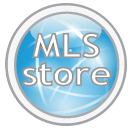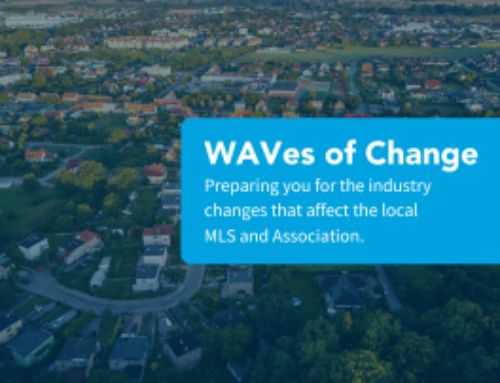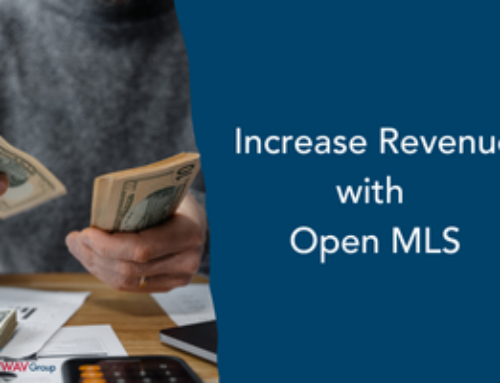I am not sure if anyone is allowed to use Apple’s famous App Store name, but lets suffice it to say that the term App Store is familiar to most – so lets use that anyway. The key components of an App Store are Instant delivery, Platform Specific, eCommerce enabled. This is really important to understand because FBS truly is launching the first real MLS App Store. This is different from the RE Technology Success Store, which we call an App Store, but it is really an eCommerce solution. Let me explain:
Instant Installation
The key component of an App Store is that when you buy something, you download it or install it and it works. It works immediately. Think of the iPhone App Store, or the Adroid Market or the Blackberry Marketplace. When you go to the app store and click the install or buy now button, you are alive in an instant.
For real estate technology products, instant means instant access. Most real estate products do not need to be installed. Rather, the subscriber needs to gain instant access to the product via single sign on or username and password. Next comes configuration: personalizing the application with branding or localization features.
My hopes are that the personalization attributes for agents and brokers become available to vendors for automatic provisioning.
Platform Specific
All of today’s App Stores are platform specific. Platform specific means that there are business rules. For example, you must have a specific version of hardware or software to have access to the App – like an iPhone 4S or operating version 5.1. Otherwise you are not allowed to play.
The MLS is a perfect Platform environment for business rules. The MLS has participants (brokers) and subscribers (Agents); REALTORS and Non-REALTORS. This information is generally curated accurately in the MLS subscriber Roster. I say generally because the roster data bases are sometimes a mess – full of duplicates, and inaccurate contact information. Much in the way that there is no clean single source of property records in America; there is no clean source of real estate agent and broker information. The closest thing is a NERDS Id for REALTORS, but that is missing all of the non-REALTORS.
My hope is that MLS App Stores will somehow find a path to circumvent the need for the three party data license agreement by replacing it with some form of instant click through agreement between all parties.
eCommerce
Fundamental to any App Store is the ability to manage transactions: some recurring monthly or annually; some one time only; others free and so on. In real estate, that gets very complex, especially in a regional MLS. Regional MLSs will need to support Association offerings and differentiate Association offerings without creating competition between Associations. If one Association offers a product like digital signatures as a member benefit via a site license; and another Association does not – the agent member needs to see the correct offering. Again, this is permission accuracy issue, but technically it is easy to support if the agent roster is accurate. Moreover, some products are only available to REALTORS. Furthermore, some or all of these products are only available if the subscriber is current in their dues. Lastly, some brokers who offer competitive products to their agents may not want the MLS to LEVEL THE PLAYING FIELD.
Summary
The App Store is the future of MLS service provisioning. It may generate MLS non-dues revenues, allow subscribers to pay for the services they use, or even emerge as something that makes MLS service free. If you are putting a strategy together for an App Store, we hope that you will call WAV Group. We have a great understanding of the current industry offerings from RE Technology and Zurora. We are building a deeper understanding of FBS Spark. We are happy to talk on the phone with you or your board of directors to discuss your plan. We can also meet at NAR Midyear.
Fundamental to success with launching an App Store is a strong strategy, articulated goals, reporting, and marketing. Today’s agents and brokers will need to learn to visit the App Store. If you think that they will come just because your built it, you will fail.
For more reading:
- Figuring out MLS Non-Dues Revenue
- How Metrolist, MRIS, and MLSListings are winning with the App Store.
- 1000Watt Consulting writes about the App Store.
- FBS Announcement of the App Store.
- RE Technology Launches App Store.






Good post, Victor, with a lot of great advice. You mentioned a few items that I can clarify abou the Spark Platform.“My hopes are that the personalization attributes for agents and brokers become available to vendors for automatic provisioning.”
Many of the personalization attributes are available through the Spark API (e.g., the agent's contact data, personal photo, logos, etc., as well as the agent’s listings, saved searches, listing carts, and contacts).
>>My hope is that MLS App Stores will somehow find a path to circumvent the need for the three party data license agreement by replacing it with some form of instant click through agreement between all parties.<<
The Spark Platform encapsulates the three party data license agreements directly into the process, from the developer to brokers and agents and through to their customers (via VOWs and IDX). These standard agreements both cover the data and software in themselves but also bootstrap the MLSs existing agreements and add the developer or app specific terms. Each user level (developer, MLS member, consumer) is required to assent to the terms at the appropriate time, including whenever the terms are modified.
Also, I should have mentioned that I very much agree with your conclusion: “Fundamental to success with launching an App Store is a strong strategy, articulated goals, reporting, and marketing. Today’s agents and brokers will need to learn to visit the App Store. If you think that they will come just because your built it, you will fail.”
Sorry for not including this information the post. But here is a general pricing summary of popular app stores.
RE Technology is $2500 per year, no revenue share with RE Technology – just whatever you work out with your partner.
Spark follows the Apple model according to their website – 70% goes to the vendor – 30% gets split between FBS and the MLS at some negotiated percentage.
Zurora pricing varies, but it is somewhere in the area of $50k set up plus annual license fee and transaction fee. No revenue share with Zurora – just whatever you work out with your partner. To be clear – Zurora is way more than eCommerce – they are a billing solution like Rapattoni Magic on Steroids.
Gents, I’d like to chime in as we’ve tested this model at Goomzee and there are indeed pros/cons.
I haven’t seen LPSs offering yet but I know the gang are smart, and Rich is great at positioning and user interface design. I’ve seen the Spark platform and they’ve done a great job with documentation and preparation. I’m already working with other independent’s who’ve forged out this model and I have mixed reviews and serious concerns over whether MLSs should even be investing their time in this in lieu of other customer needs. Again, we have something shiny and new, but I don’t think people have really thought through or flushed out their business cases. Perhaps some perspective from someone who’s been there, done that not only in the real estate industry, but also in two other industries, might be useful (my personal experience).
The pros seem to really only benefit the MLS (and that is questionable actually as you read on), but at the expense of the end user and vendor in most cases. The only real problem solved is centralizing procurement and promotion. For an MLS that prides themselves on customer service, and a vendor that prides themselves on the same, and their brand, it can actually be a very risky proposition so indeed it must be done properly, if that’s possible at all, which I’m not 100% convinced. The real question to ask is are your customers screaming for you to solve online ordering because it’s too difficult to visit someone’s website and enter credit card information?
Personally I think this model could work for small MLSs with limited staff and outsourced support to vendors because their end-users are already trained on that MLS-vendor relationship. In small quantities, that could work, but in large quantities, it’s a nightmare both for the vendor and the end user, and ultimately the MLS because of frustrated customers (the folks who ultimately pay their bills). I also think this model could benefit vendors, especially new entrants, to help acquire smaller markets that are fragmented that they might not have invested as heavily into multi-year sales cycles, tradeshows, travel, relationships, product, integrations, and brand.
For larger MLS markets that provide their own support, and those vendors invest $millions in multi-year sales cycles and business relationships, product enhancements, integrations, etc., I believe you have a disaster waiting to happen by diluting the very benefit from investing in those long business cycles. Further, I’ve seen firsthand the frustration MLS customers face when getting the “runaround” over who to contact to get their problems solved. One extra step or call and they’re livid and looking for someone to blame or bash online. MLS staff are typically not equipped to handle support for a vast array of products, and have enough on their plate just supporting the MLS system itself. Once customers have questions or issues with a 3rd party product, the MLS staff note the issue, then typically pass it onto the provider. The provider then has to attempt to contact the customer to make them repeat themselves, and often they’re not answering phone or emails at this point so it stretches out days sometimes. At that point, they’re so upset that they start to dislike the provider at an outlet for frustration, risking their brand and any potential referrals.
The #1 support issue I see with one of our products, for example, is logging in, and over 90% of the time, the user input the password incorrectly or improper case, sometimes caused by their phone capitalizing a letter and they didn’t notice. Something as simple as that, which the vendor was not at fault at all could take days to resolve (phone/email tag), could lead to product cancellations, bad reviews in app store, and no potential referrals and all could have been avoided if the end user contacted the provider directly. The support costs for vendors more than doubles because of the extra effort to reach customers after the fact, then troubleshoot and resolve. To make matters worse, most models want vendors to reduce their prices, and give up more of their revenue, and ultimately cost them more in support so if they’re smart, they’ll instead raise their prices to offset and in the end, yet again the end user is punished by having to pay more.
I have firsthand experience both in the real estate/MLS industry, and in my “past life” running my family businesses, and have seen these shortfalls (mainly in customer service and end user confusion) by adding this additional layer of separation between the end customer and the “service provider”. My family’s towing business, for example, was the largest AAA service provider for over 30 years in the Inland Northwest in regards to call volume. My grandfather personally sold AAA memberships right out of the truck for several decades to build up their membership in and around Western Montana. Customers called direct, received excellent service and recommended others, and because the service levels were so high, as our company and market grew AAA saw no reason to introduce additional service providers because the service levels and membership renewals were higher than other markets around the US. In other markets of the same size they’d have 2-3 providers but satisfaction levels were the best in the country so there was no reason to fix what wasn’t broken. This all changed when new leadership got the bright idea to centralize a call center and force all AAA members to call their toll free 800 number.
The first 2 years, customers were so frustrated and upset that memberships declined and many of our customers refused to wait for AAA’s toll free operators and called us back and opted to pay for service instead of the runaround, and submit the invoice to their insurance. This was great for our company initially because they paid us 100% more than AAA’s contracted price, but bad for them because of the hassles. Ultimately, most AAA contractors in the state started de-prioritizing AAA calls over cash calls and the end customer now has to wait longer to get rescued on the side of the road, and many cancelled memberships and now go the cash option.
Some service providers in other cities even dropped support for AAA altogether, and only service cash customers direct to ensure they receive high marks of customer service, more revenue per customer, and referrals given they maintain their business relationship. This relationship is key to long-term business success, especially in local markets. We only kept AAA because we treated it like a loss leader, and our drivers were “outside salespeople” selling the services of our other businesses, namely our auto repair shop. When local repair shops and dealerships saw a decline in their business (newer, long-lasting cars), however, they purchase towing equipment and promote towing direct to customers so they increase top-line revenue, and ensure they keep their customer relationship.
At this point, there’s was no incentive for our company to support AAA and they later introduced 2 other local providers and diluted the benefit, so it is no longer top priority to provide the same service levels for less money and a customer we have no relationship with. The issue was that extra layer of abstraction between the end customer, and the service provider, severed that relationship and results in substandard customer service and wait times to get issues resolved. But I digress so back to the MLS and real estate industry.
I might compare this model to the franchises’ approved vendor programs. They try to collect fees from vendors, and often require attendance to one or more conferences (committing $20-50K annually each in booth, travel, payroll, etc.). We were approached by the top brands and truly considered these years ago and marched down that path, only to learn that it was merely a revenue source for franchises and their agents knew it. Upon researching, I found that the agents put little, if any, stock into the directories (I asked them personally at many trade shows and all stated the same). I decided not to invest in that model and it was the best decision I ever made. It works to reach some new entrants, but most I found spend so much to get in the business they cannot afford to keep going so start dropping services as fast as they sign up and skate by on life support and credit cards or part time jobs until they get some listings and closings. Really vendors only prosper with that model as a “pay to play” strategy to gain opportunities to pitch the franchise for some enterprise solution (i.e. Market Leader, Wolfnet, etc.). At that point it’s a drop in the bucket for the $30-50K/year you have to invest to win multi-million-dollar contracts, but for most it’s a losing proposition and just means for the franchise to fill some booths at a retreat or trade show. There are no guarantees they will promote you, provide you mailing lists and whitelist your domain from spam filters, or offer any exclusivity of any kind so very one-sided.
I do still see that bandwagon affect, and organizations rushing to make decisions without truly analyzing their organizational goals, and the affects of their decisions only to have to back peddle and clean up the mess later. If you take a consultative approach to making business decisions, the first is to define the business case, your organizational objectives, and the measurements (or KPIs) to determine if your actions met your expectations. The bottom line is to ask yourself “what problem am I trying to solve?” and most importantly “are my customers asking me to solve this problem?”. I admit, I really wanted to make Social Media work for my company and even invested in prototypes and research but then the cold hard question of how that will benefit my customers forced me to abandon it. The harsh reality is that few models prosper from Social Media as sexy as it is. In the real estate industry the agents agree to cooperate at the listing level, but compete on nearly every other level, so if something is great they’re less inclined to “skill up the competition.” If I’d not really asked what problem I was solving and what the true benefit was, I’d have wasted more time and $tens to hundreds of thousands in engineering.
To me, an app store for small MLSs could work to solve the problem that they don’t have the staff or processes to efficiently select, negotiate, or promote 3rd party solutions to their members but if you dig deep, there still must be a selection/vetting process to avoid recommending substandard products to customers. If that is the case, they really only save on promotion, but must look at what you currently invest in promotion. For smaller MLSs, it could be a quarterly lunch and learn where they invite speakers (who typically sponsor lunch anyway), and a logo in a monthly newsletter or on a partner page on their website. The investment they make is so small, there’s little actual gain so again what problem do they solve?
One could argue that non-dues revenue stream is the justification to kick off this process, but many vendors already offer the revenue share model to MLS. In this case the only incentive is control and transparency, but that can be solved contractually (and typically is) by requiring the right for audits. Another rule of thumb is don’t do business with people you don’t trust and that typically solves all fears/concerns over control. If the revenue expectations are truly so great that it makes sense to kick off organization change of this type, I’d say instead invest more time and effort in supporting and promoting the companies they are already working with and get higher return, plus partners willing to work harder for them because there are incentives to do so.
One of the other justifications for this model I’ve seen is central access or SSO integration, which again leads me to believe this might work for smaller markets but not for larger multi-regional markets. Most vendors, like my company, have already integrated with the MLS systems in these larger markets, and must customize their systems to handle the unique rules as result of mergers and combined boards and legacy data designs and processes.
In looking at the pros/cons, especially as a vendor who is testing this model already, I can say for certain that the end-user suffers regardless just by sheer confusion, runaround and frustration, plus more change which is tough as we all know. I would strongly encourage MLS executives to first define a business case before jumping on any bandwagons. Ask yourself whether your customers are demanding that you make signing up for products online easier, and how important that is compared to all their other needs, and ultimately what problem you’re solving and the risk vs. reward.
As a vendor, I personally am on the fence with this model, but always keep an open mind and try anything once (or twice or thrice because I’m a stubborn and optimistic entrepreneur). Ultimately, the only justification as a vendor I can see for this model is to pick up smaller fragmented markets for marginal revenue opportunity, but I’d first design my product and service expectation levels to more of a self-service model to avoid risking my brand and setting proper customer expectations up front. If the product is not designed for self-service, watch out!
As enticing as additional margin revenue opportunity is (with no guarantees of course), I also have little/no interest in diluting the significant ($millions) investment I’ve already made in existing markets, knowing the significant disincentives that lay ahead. The level of customization required to effectively support these costs a lot of money and resources. MLSs should not be recklessly discard the investments they’ve asked companies to make to date, only to ask for even more investment with no incentives (exclusivity, higher margins, more promotion). Instead of incentives from the programs I’ve seen, I actually see the opposite: asking for larger cut into margins, lower prices, no exclusivity, no personal customer relationships, risk brand reputation because of frustrated and confused end-users, no control over cash flows (waiting for commission checks), and no way to solve billing or cancellation issues and instead giving end users the runaround.
My biased (but honest for those that know me) advice is to think long and hard on what problem you truly solve and ultimately whether the end-users are asking you for. Also think about what incentives you offer the service provider to subscribe to such a model, because ultimately they are whom you rely on to maintain your reputation with your customers. If it’s not truly a win-win relationship, all suffer or your customers are left picking up the scraps. You could spend more time and energy supporting your partners and making them successful instead of constantly chasing that shiny new object for fear of getting left behind. Your stakeholders will not fault you for bolstering customer satisfaction, revenue, and a stable and successful partner relationship.
Mike, you make a really great point about support, and I agree that’s going to be a big key to the success or failure of the Spark Platform or other initiatives. Both FBS and each MLS will have to work hard to ensure that the applications in the store are supported in a clear and effective manner. Certainly, FBS has long been known as a vendor that excels at end user support, and the MLSs we’ve signed up so far for the Spark Platform share that ethos. Accordingly, all the developers we select for the store will have to share that ethos as well, and the Platform will have to do a great job at making it clear to the user how to get support immediately.
You also make a good point that MLSs considering a store need to know what problem they are trying to solve. You specifically mention order and payment processing, and point out that this isn’t a big problem to solve and likely isn’t worth the effort. I very much agree with you on this. If that’s all the Spark Platform did, I’m confident the MLSs who have signed up for it wouldn’t have been interested.
Instead, the problems the Spark Platform solves are alluded to in another statement you make toward the end of your comment:
>> I also have little/no interest in diluting the significant ($millions) investment I’ve already made in existing markets, knowing the significant disincentives that lay ahead. The level of customization required to effectively support these costs a lot of money and resources.<<
That, in a nutshell, is the problem the Spark Platform solves. The fragmentation of the MLS industry requires each new developer to spend millions to have an impact on the market. If the Spark Platform is successful, we'll lower those costs dramatically, increase the number of developers in the market, improve the interoperability of software, and ultimately create more choice and innovation in broker and agent tools.
Will that mean more competition for existing vendors? Sure. Are existing vendors likely to be interested in changing what already works for them? Of course not. But that doesn't mean there won't be a lot of new vendors that can take advantage of a streamlined API, market, and deliver mechanism. This is not about credit card processing. It's about creating an ecosystem, with brokers and the MLS at the heart of it.
Here are some questions that we are hearing. I think that they are all solvable, but they are voices in the crowd….
1. Will the API standard data set be deep enough for all applications?
2. Will the MLS three party data license agreement be automated?
3. Many vendors need the data on their servers to optimize it for their applications (resize photos etc.)?
4. Performance of screen loads when using the API could be an issue?
5. Who will be approving refunds and managing credit card rejections?
Victor, here are some responses:
1. Will data standard set be deep enough? Not likely in the beginning, but, as I noted here, the platform is a process as well as technology. One of the main reasons we built the Platform was to get the ball rolling on implementing the RESO data dictionary. RESO can create data dictionaries until they are blue in the face, but, unless MLSs are actually going to adopt them, they won’t mean anything. What I came to believe after 5+ years of howling into the wind about data standards is that they won’t get adopted unless there’s something pushing adoption, and that something most likely should be an immediate incentive, like a new product that needs new standards. Accordingly, we created the Platform to provide that incentive to all parties to support the continuous and virtuous cycle of adoption by MLSs of more and more standard data to encourage more applications. We don’t expect it all to happen magically overnight, but the tools we’ve created for mapping the data allow for rapid updates by MLSs as needs arise.
2. Will the MLS three party data license agreements be automated? Yes.
3. Will vendors be able to replicate data from the API? No, replication is not the purpose of the API; RETS already solved that problem. Developers can cache for performance reasons, but they cannot replicate the data.
4. Performance, will the API be fast enough? The Spark API is already powering our mobile application and performance has not been an issue. We’ve built the API to scale and we’re confident it will allow developers to create an awesome user experience.
5. Who will be approving refunds and managing credit card rejetions? Each developer will have a dashboard with reporting available through the Platform to manage refunds and credit card rejections.
Great info.